How to Send Allen Bradley Alarm Notifications via SMS Text or Email
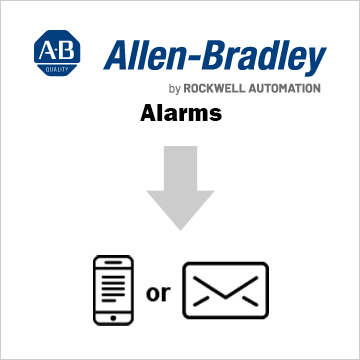
Open Automation Software Tags can be defined to connect directly to Allen Bradley ControlLogix, CompactLogix, GuardLogix, Micro800 MicroLogix, SLC 500, and PLC-5 controllers Allen Bradley Driver Interface. This tutorial walks you though downloading and installing OAS, configuring an Allen Bradley driver, configuring tags, configuring alarm limits and configuring alarm notifications. Alarms notifications can be sent via e-mail, SMS text or voice to users based on specific filter criteria.
Step 1. Download and Install the Open Automation Software and Start the OAS Service
If you have not already done so, you will need to download and install the OAS platform. Fully functional trial versions of the software are available for Windows, Windows IoT Core, Linux, Raspberry Pi and Docker on our downloads page.
On Windows run the downloaded Setup.exe file to install one or more of the Open Automation Software features. Select the default Typical installation if you are not sure what features to use or the Custom installation if you want to save disk space on the target system. When prompted agree to the End User License Agreement to continue the installation.
For more detailed instructions and video tutorials, visit the installation guide for your system:
Windows Installation | Linux Installation | Raspberry Pi Installation | Dockers Installation
The OAS Service Control application will appear when the installation finishes on Windows. Use this application to start the 3 Services. Run the Configure OAS application on Windows and select Configure-Tags; if the first time running, the AdminCreate utility will run to create an Administrator login as shown in Step 1 of Getting Started – Security.
Step 2. Configure Your Allen Bradley Data Source
- First, you will need to open the Configure OAS application from the program group Open Automation Software.
- Select Configure >> License from the top menu and verify that Allen Bradley is one of the available Drivers in the lower left of the form. The demo license will have this by default. If you do not see Allen Bradley available, contact support@openautomationsoftware.com to update your license.
- Select Configure >> Drivers from the top menu.

- Select localhost or the remote service you wish to modify with the Select button to the right of the Network Node list.

- The Configure Drivers Screen will appear. Select either AB Classic for MicroLogix, SLC 500, and PLC-5 or AB Logic for ControlLogix, CompactLogix, GuardLogix, and Micro800 from the Driver dropdown box.
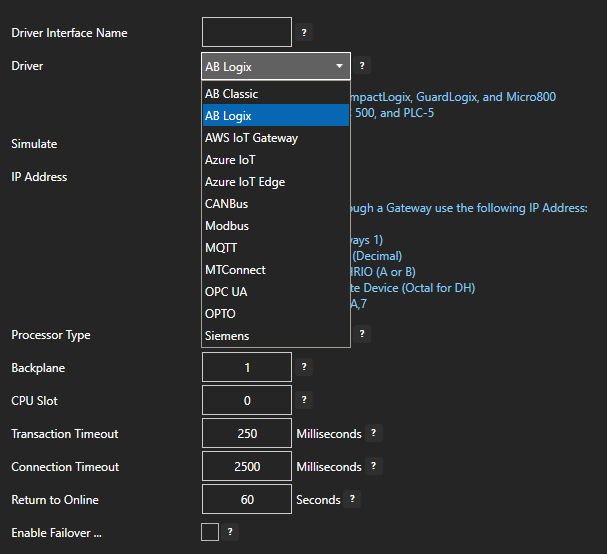
- Enter a meaningful Driver Interface Name that you will refer to this physical connection when defining Tags with an Allen Bradley Data Source.
- Define the properties for the desired physical connection.
- Click the Add Driver button above the Driver list in the left pane to add the Driver Interface as an available selection when defining Tags in the next step.
For more detailed instructions on configuring your Allen Bradley data source, click here to see our Getting Started Allen Bradley tutorial.
Step 3. Configure Your Tags
OAS provides multiple ways to add and define tags:
- Manually add and define Tags using the Configure OAS application. …learn more…
- CSV Import and Export …learn more…
- Programatically …learn more…
- One Click Allen Bradley …learn more…
- One Click OPC …learn more…
To add a Tag manually:
- In the OAS Configure Application, select Configure >> Tags from the top menu.

- Select localhost or the remote service you wish to modify with the Select button to the right of the Network Node list.

- Click on the Add Tag button located at the top of the Tag browser on the left portion of the screen.

- A dialog box will appear. Enter a name for your new tag and click ok.
- A configuration screen will appear for your new tag. Select your data source type in in the Data Source dropdown box.

- Specify the correct data type in the Data Type dropdown box.
- Click Apply Changes at the bottom right of the window.
For more detailed instructions on configuring your tags, click here to see our Getting Started Tags tutorial.
Step 4. Configure Alarm Limits
- In the OAS Configure Application, select Configure >> Tags from the top menu.

- Select localhost or the remote service you wish to modify with the Select button to the right of the Network Node list.

- Select the tag you wish to set alarm limits for from the tag browser on the left.
- Use the tabs at the top of the tag properties window to configure alarm limits for your tag based on type: High High, High, Low, Low Low, Digital and Rate of Change.

- Check the Enable Alarm checkbox to enabling your alarm limit; alternately, you can use he Enable with Tag…checkbox.
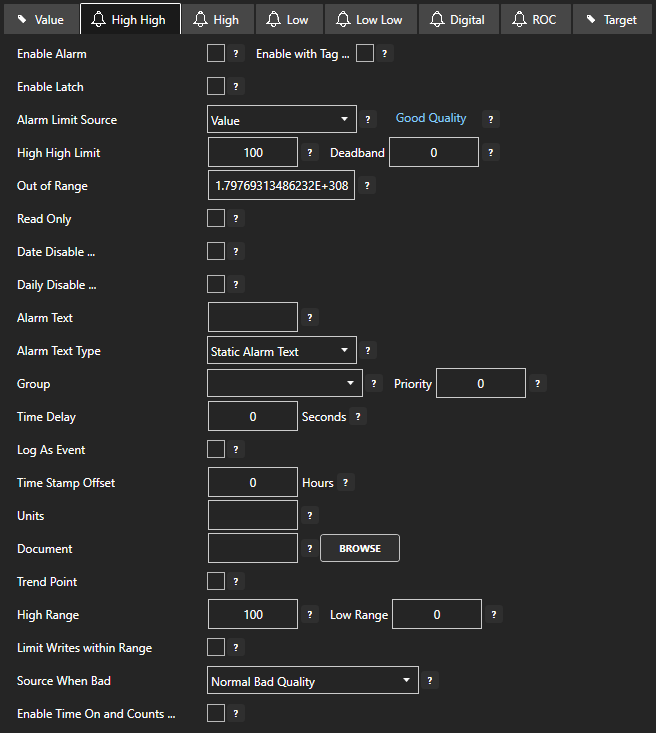
- Set your Alarm Limit Source with the dropdown box. If you choose Value, enter the value in the provided text field.
- When you have finished configuring your alarm limits, click Apply Changes in the bottom right of the properties window.
For More detailed instructions on Configuring Alarm Limits, visit our Alarm Limits tutorial or watch the video below:
Step 5. Configure Alarm Notifications
- In the OAS Configure Application, select Configure >> Alarm Notification from the top menu.
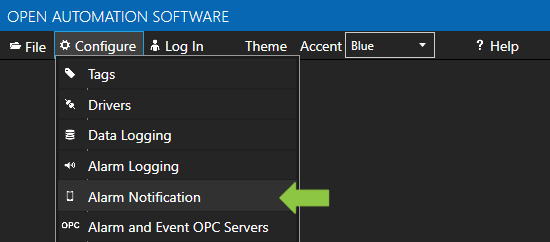
- Select localhost or the remote service you wish to log alarms from with the Select button to the right of the Network Node list.

- A Notifcation Group screen will appear. Give your group a meaningful name in the Notification Group Name box.
- In the Common tab, check Notification Active to activate your group. Alternately, check Enable Notification with Tag… and choose a tag with the Browse button that appears.
- Use the Filters tab to select which types of alarms you want in this group. Alarms can be filtered based on Alarm Priority, Alarm Groups, and Alarm Types.
- Use the Email tab to configure alarm notification via email.
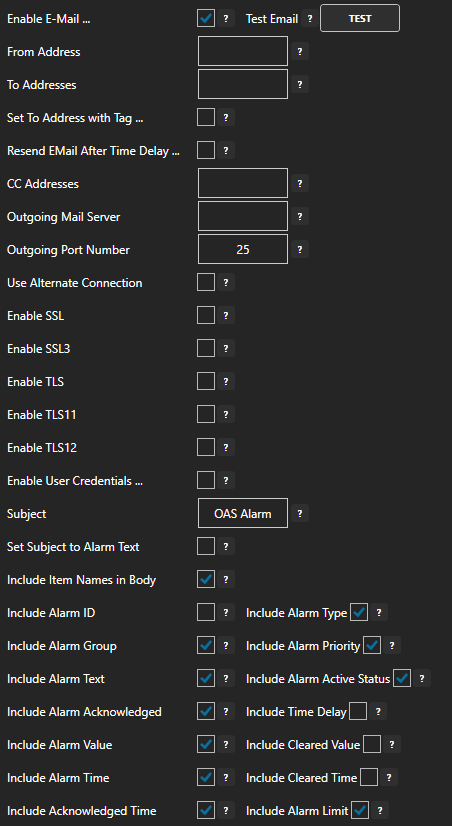
- Use the SMS tab to configure alarm notification via text. You will need to create an account with Twilio (www.twilio.com) to handle SMS/Voice notifactions.

- Once you have finished configuring your notification group, click the Add Group button in the left panel to add your new group.
For more detailed instructions on Configuring Alarm Notifications, visit our Getting Started – Alarm Notification tutorial or watch the video below:


